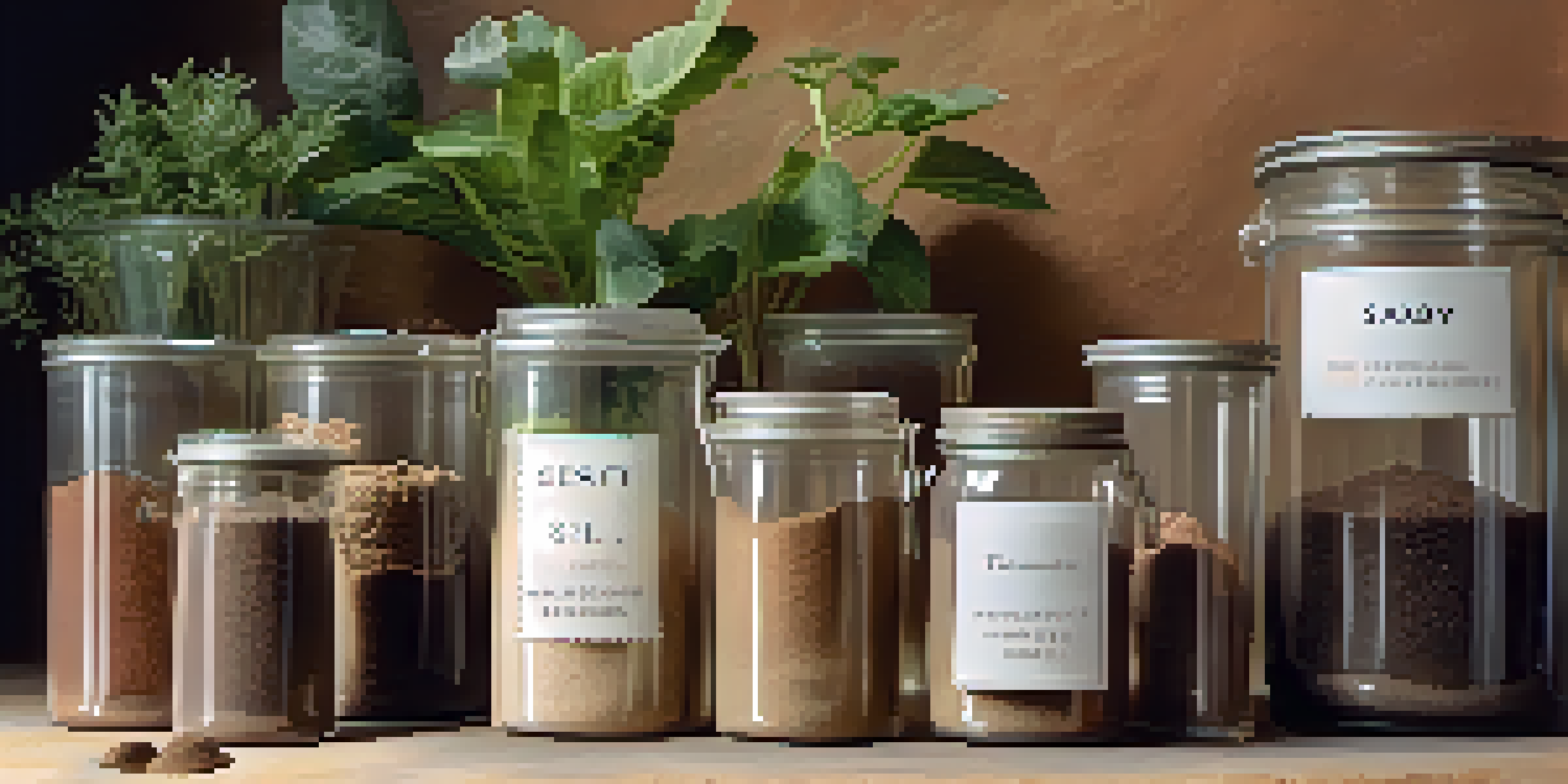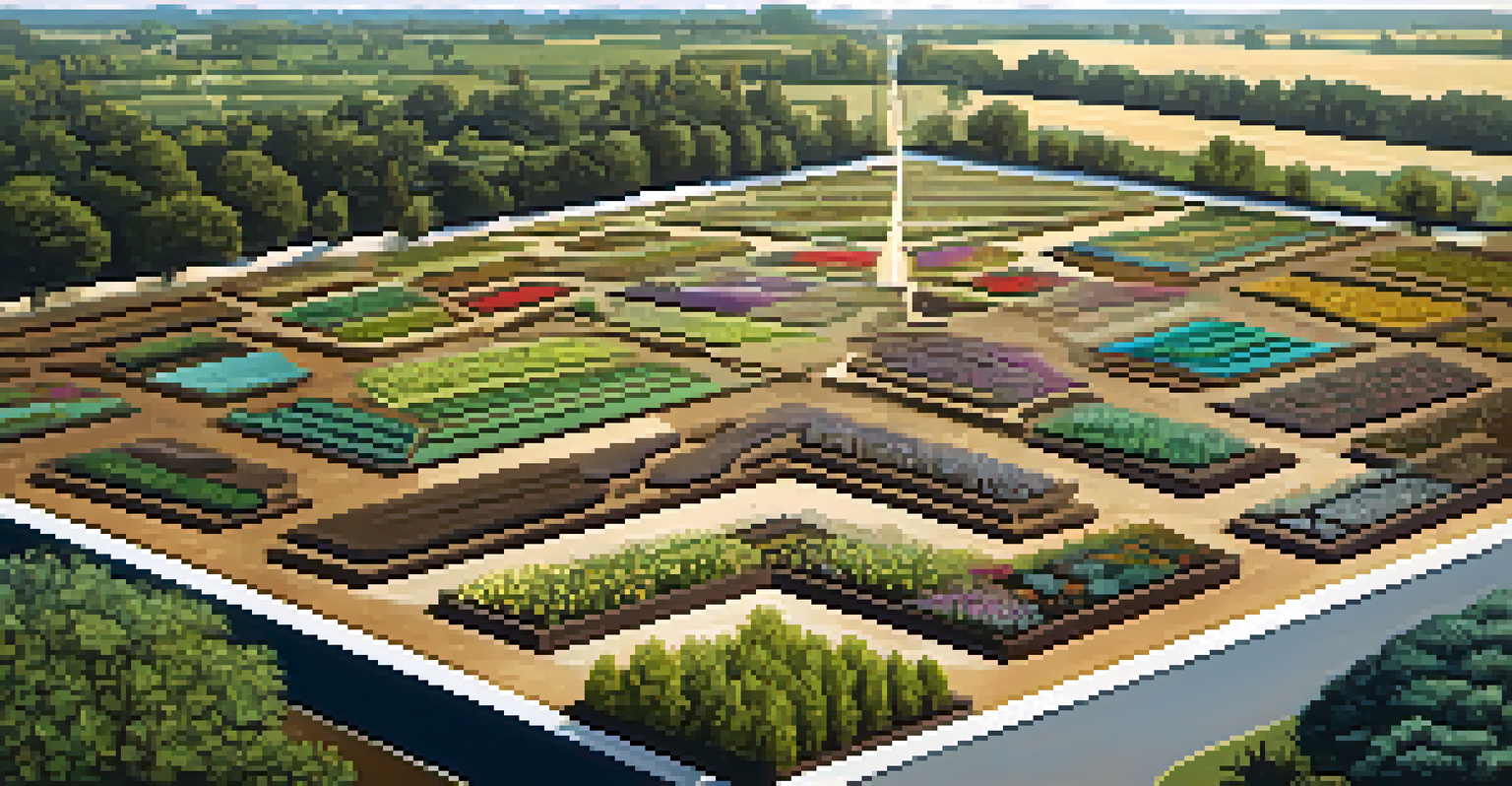Understanding Soil Types Through Digital Gardening Tools

The Importance of Knowing Your Soil Type
Understanding your soil type is crucial for successful gardening. Different plants thrive in specific soil conditions, and knowing your soil can lead to healthier growth and better yields. Whether your soil is sandy, clay, or loamy, each type brings its unique challenges and benefits.
The health of the soil is the foundation of a healthy garden.
For instance, sandy soil drains quickly, making it great for plants that prefer drier conditions but can struggle to retain nutrients. On the other hand, clay soil tends to hold moisture but can become compacted, hindering root growth. By identifying your soil type, you can tailor your gardening approach accordingly.
Ultimately, knowing your soil type empowers you to make informed decisions about plant selection, watering, and fertilization, ensuring your garden flourishes.
How Digital Tools Transform Soil Analysis
Digital gardening tools have revolutionized how we analyze soil types. With the help of apps and online resources, gardeners can now quickly assess their soil's composition and health. These tools often utilize advanced technology, such as soil sensors and satellite imagery, to provide accurate data.

For example, some apps allow you to take a sample of your soil and send it for analysis, receiving detailed reports on pH levels, nutrient content, and organic matter. This information is invaluable, enabling you to understand what your garden needs to thrive.
Know Your Soil for Better Gardening
Understanding your soil type is essential for selecting the right plants and ensuring healthy growth.
In essence, these digital tools simplify the process of soil analysis, making it accessible even for novice gardeners. By demystifying soil science, they empower everyone to cultivate a flourishing garden.
Popular Digital Gardening Tools for Soil Testing
There are several popular digital tools available that cater to soil testing. Apps like Soil Test Pro and MySoil offer user-friendly interfaces for analyzing soil health and composition. These tools often provide step-by-step guidance on how to collect samples and interpret the results.
Gardening is a way of showing that you believe in tomorrow.
Additionally, many gardening websites offer calculators to help you determine your soil type based on its physical properties. These resources can help you make better decisions about soil amendments and plant choices.
By using these tools, you can take the guesswork out of gardening and ensure that you’re providing the best conditions for your plants.
Understanding Soil pH and Its Impact
Soil pH is a critical factor that affects plant health, influencing nutrient availability. Most plants thrive in slightly acidic to neutral soils, typically between pH 6.0 and 7.0. Digital tools often include pH testing capabilities, giving you insights into how to amend your soil effectively.
For instance, if your soil is too acidic, you might need to add lime to raise the pH. Conversely, if it’s too alkaline, sulfur can help lower it. Understanding your soil's pH through digital tools allows for precise amendments, leading to healthier plants.
Digital Tools Simplify Soil Analysis
Apps and online resources make it easy for gardeners to analyze soil composition and health.
In summary, monitoring soil pH is essential for ensuring that your garden receives the nutrients it needs to flourish, and digital tools make this process straightforward.
Nutrient Levels and Soil Fertility Insights
Digital gardening tools can also provide valuable insights into soil nutrient levels. Many testing apps can analyze macronutrients like nitrogen, phosphorus, and potassium, which are vital for plant growth. Understanding these nutrient levels helps gardeners tailor their fertilization strategies effectively.
For example, if your soil is low in nitrogen, you might choose to apply a high-nitrogen fertilizer or plant cover crops that can fix nitrogen in the soil. Knowing exactly what your soil lacks allows for targeted and efficient use of fertilizers, minimizing waste and environmental impact.
Ultimately, digital tools empower gardeners to cultivate rich, fertile soils, enabling vibrant plant growth and sustainable gardening practices.
Utilizing Soil Maps for Better Planning
Soil mapping is another innovative way digital tools enhance gardening. Many apps provide access to detailed soil maps that outline various soil types in specific areas. These maps can help you understand the broader characteristics of your garden's location, which is particularly useful for new gardeners.
For instance, knowing that your area has clay soil can inform your decisions on drainage solutions or plant selections. Likewise, soil maps can reveal regional variations that may affect growth patterns, helping you align your gardening practices with local conditions.
Soil pH and Nutrients Matter
Monitoring soil pH and nutrient levels is crucial for effective fertilization and plant health.
By leveraging soil maps, you're equipped to make smarter decisions about your garden's layout, leading to more productive and enjoyable gardening experiences.
Future Trends in Digital Gardening Tools
The future of digital gardening tools looks promising, with continuous advancements in technology. Innovations like artificial intelligence and machine learning are starting to play a role in soil analysis, offering even more precise recommendations for gardeners. As these technologies develop, we can expect more personalized gardening experiences.
Imagine an app that not only analyzes your soil but also suggests specific plants based on your local climate, soil type, and gardening goals. Such tools could take the guesswork out of gardening, making it easier for anyone to grow a thriving garden.

As we embrace these advancements, the possibilities for improving soil health and gardening success are virtually limitless, ensuring that gardening remains a rewarding endeavor for all.